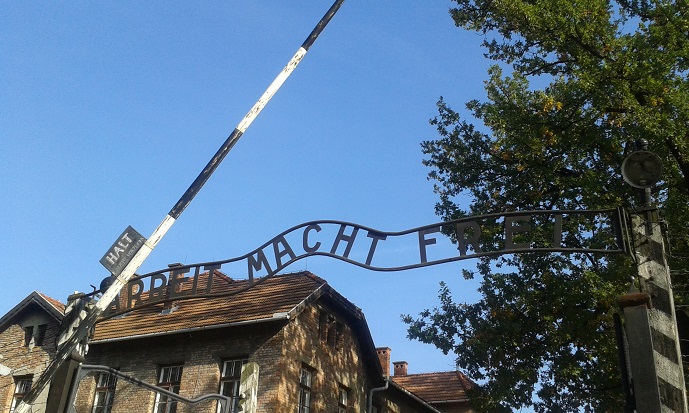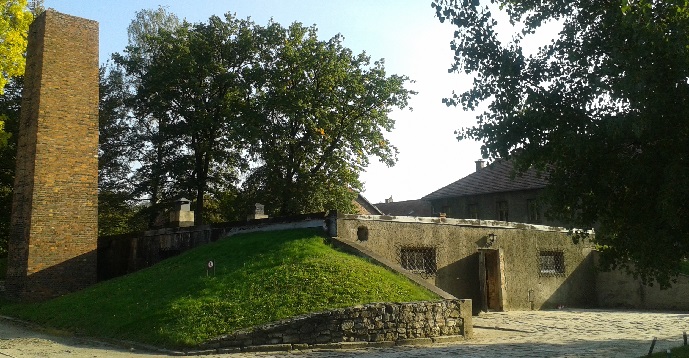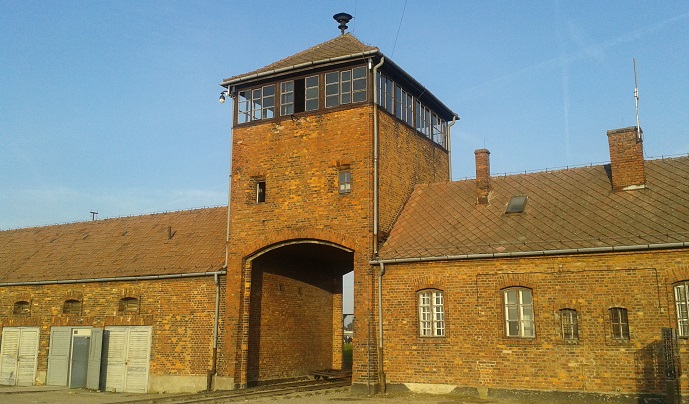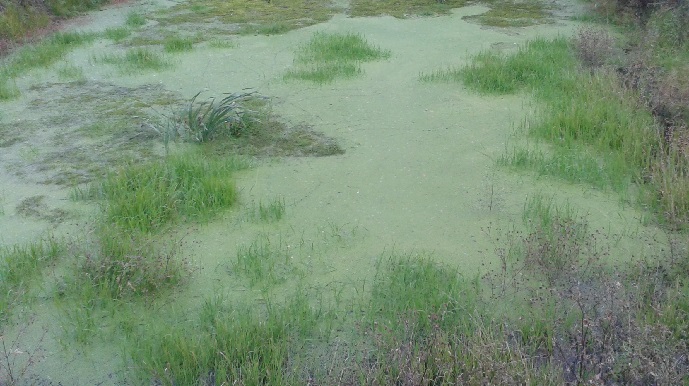Auschwitz
Auschwitz

Auschwitz, Poland
"Auschwitz" is the German translation of Oświęcim, the Polish name of a small town on a major rail junction in south Poland. Of course, Auschwitz is best known not for the town but the concentration camps that the Nazis built around the town of Auschwitz and used to murder 1.3 million people, including 1.1 million Jews, during World War II.
The Nazis built three concentration camps in the area. Auschwitz I was built southwest of the town in 1940. Auschwitz II-Birkenau, the massive extermination camp, was built 3 kilometers west of Auschwitz I in 1941, and Auschwitz III, a small slave labor camp for a rubber factory, was built 7 kilometers east of Auschwitz I in 1942.
The sign above the gate of Auschwitz I declares in German, "ARBEIT MACHT FREI," which means, "Work Makes [You] Free," and was intended to deceive the arriving prisoners to obediently undress and enter the gas chambers, supposedly for a disinfecting shower, by giving them the hope that freedom can be gained through hard work.
Below is a mound of shoes in Auschwitz I. They are not the shoes of everyone who perished at this camp. They are just the victims' shoes that were awaiting the next transport to Germany when the SS abandoned the camp. Also on display at Auschwitz I are the transport-awaiting mounds of brushes, eyeglasses, pots, pans, etc.

Most of the gas chambers and crematoria at Auschwitz were destroyed by the SS just before they abandoned the camps. The one below at Auschwitz I survived because it had been converted earlier into a bomb shelter for the SS.

Entering the door above leads to the gas chamber below, where the victims, naked by this time, were packed like sardines for their "shower." Once the door was closed and sealed behind them, poisonous Zyklon B (hydrogen cyanide) gas was released into the chamber.

Next to the gas chamber above are the ovens (below), into which the victims' corpses were loaded and incinerated. Their ashes were dispersed through the chimney (above) or dumped in the ponds or the rivers just south of Auschwitz I and just north of Auschwitz II.

Below is the main gate of Auschwitz II-Birkenau through which trains carried over a million people into this extermination camp.

The photo below, taken from the guard tower above the gate (above), displays about 1/6 of Auschwitz II-Birkenau. Over 90% of those who arrived through the gate above were gassed and incinerated upon arrival. The barracks below and in the other 5/6 of Auschwitz II-Birkenau housed the small minority who were picked upon arrival to provide the slave labor required to operate the camp, which murdered with industrial efficiency.

Below is one of Auschwitz II-Birkenau's ponds into which the incinerated ashes of the gassed victims were dumped. In the summer, these ponds teem with an eerily high concentration of frogs that continue to feed on the 'nutrients' from the ashes of innumerable human corpse that 'enriched' the local ecosystem seven decades ago. When the frogs hibernate in late autumn, the ponds still retain an eerie color and texture (below)

The plaque below in Auschwitz II-Birkenau declares, "For ever let this place be a cry of despair and a warning to humanity, where the Nazis murdered about one and a half million men, women and children, mainly Jews, from various countries of Europe."

What is the meaning of the cross?